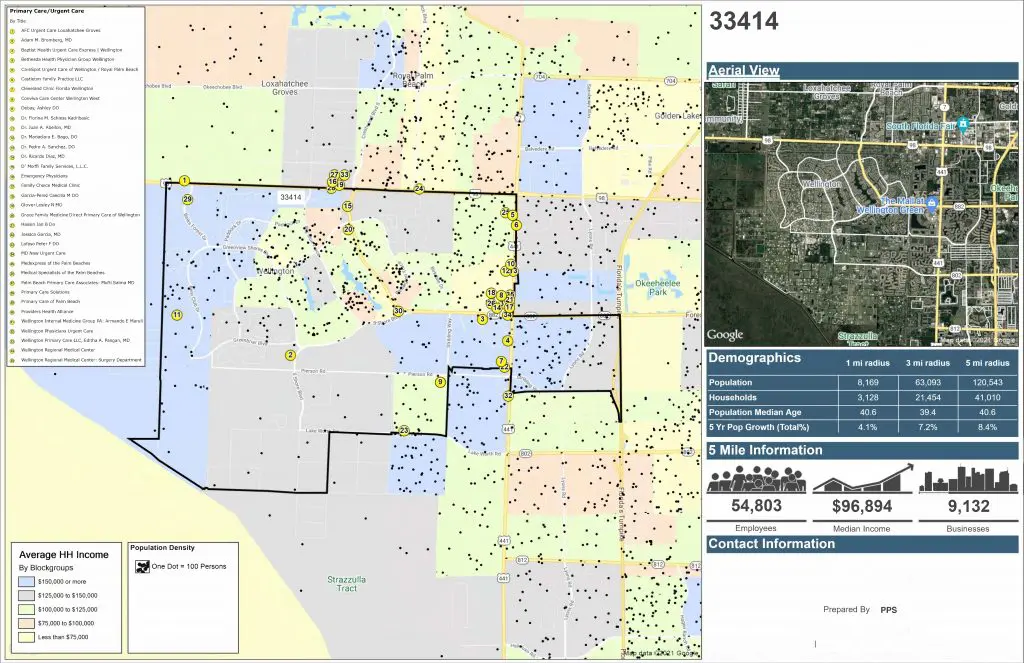
As you have most likely realized if you’re reading this article, selecting a new location is one of the first and most difficult steps when opening a new medical practice. It doesn’t help that many of your initial start-up tasks are contingent upon first having a location identified.
In this article, we would like to give you 10 metrics that you can and should use to identify the best possible location for your new business. Researching potential locations seems pretty straight forward but we’ve found that many new practices don’t know what exactly they’re looking for. There are many factors that come into play when selecting a new location our market for your practice. These include area demographics, insurance payer outlooks(any panel closures?), housing statistics/trends, employment outlook, cost of living trends, competitors and much more.
To determine which city/community would be best for starting up a medical practice, review how your practice stacks up against these 10 evaluation metrics. Ultimately, regardless of what the data says, your new location has to feel right for you and somewhere that you can see yourself practicing longterm.
Evaluate Your New Practice Location Using These Key Metrics
-
How is the Housing Market
-
Ensure Demographic Data is Aligned with Your Best Patient
-
Understand Employment Statistics
-
Review Insurance Payer Outlook & Current Status
-
Cost of Living Trends in the Area
-
Is the Community Thriving or Surviving?
-
Examine City Competitiveness for Investment and Jobs
-
How you Will Attract New Patients & What it will cost
-
Determine Location is Comfortable for You Long Term
-
Understand Current Competitive Landscape

How about some help from the experts!
There is no financial incentive in this endorsement, just the opportunity to ensure providers receive the help they need and deserve. Save yourself time, money and frustration, by allowing the team at CARR help you find that perfect location.
Your location is too important to trust anyone else!
CARR is the nation’s leading provider of commercial real estate services for healthcare tenants and buyers. Every year, thousands of healthcare practices trust CARR to achieve the most favorable terms on their lease and purchase negotiations. CARR’s team of experts assist with start-ups, lease renewals, expansions, relocations, additional offices, purchases, and practice transitions. Healthcare practices choose CARR to save them a substantial amount of time and money; while ensuring their interests are always first.
Visit CARR.US to learn more about our expert representation services.
1. How is the Housing Market trending?
This is a great first place to start as all of your potential patients have to live somewhere. The housing market can be a great early indicator of where the community is headed in the next 3-5 years. If there is a surplus of inventory and avg price is headed down, it doesn’t take a rocket scientist to know that the community is headed in the wrong direction. Housing starts are somewhat cyclical so this is something to consider when reviewing the data. If you’re looking in November, the odds are that you’ll see it going in the wrong direction. This is why it’s important to look at data over at minimum, a 3 month time period. Here is easy to find data points worth reviewing:
- Number of homes sold compared to prior period
- Average time on market
- Homes sold at or above list price
- Price Trend- Direction & Percentage
- Current Inventory Levels vs Historical Data

2. Ensure Population is Aligned with Your Best Customer
What exactly do we mean by this statement. Here is an example of what we mean. Say I was opening a new pediatric practice, should I consider areas where the average age is over 60 or under 40? Conversely, if I was opening a new dermatology practice with a focus on skin cancer, the over 60 area would offer more potential. With the availability and accuracy of data at your disposal, there is no reason to guess when it comes to this metric.
In addition, are you offering cosmetic services and need patients that are more affluent or are you really wanting to reach underserved communities that may have a higher percentage of Medicaid? This kind of information is readily available by reviewing income data based on zip code. Is there a certain ethnicity or age group that is predisposed to a condition you treat? These are important questions to ask yourself. You could have the best practice in the world but it needs to be located where your patients are or you’ll always be fighting an uphill battle.
Be where your patients are!
3. Understand Employment Statistics and What It Means to Your Practice
For example, in an area with a high concentration of employment and low unemployment rate, you may find that there are more people who have insurance coverage through their employer. These patients will be less inclined to use the emergency room for minor health issues or access charity care offered at your clinic. On the other hand, if this particular community has a high unemployment rate or one that is trending in the wrong direction, that is likely a sign that economy is struggling. One thing you could do to verify the statistics is to reach out to some of the larger employers in the area to see if they are hiring (you can also find out what insurance they offer and make sure to participate with this one). There are some job boards that will tell you how many open positions there are and how this compares to the prior year.
High unemployment rates will also lead to more patients utilizing Medicaid and it is extremely difficult to stay solvent if more than 10-15% of your practice is Medicaid. I hate that there are so many people leaning on Medicaid for help and ultimately suffer with inadequate medical care. It’s the sad truth that Medicaid simply doesn’t pay enough to keep the lights on. If your heart is to help in these underserved communities, my suggestion would be to research grants offered by your city or perhaps set up a free Saturday screening clinic once a month at a local gym or church. I’ve done a lot of these and they are very fulfilling and providing an important service to the community. like that. Ignoring facts and relying on your own bleeding heart will do nothing to serve the community longterm as you’ll be out of business in six months.
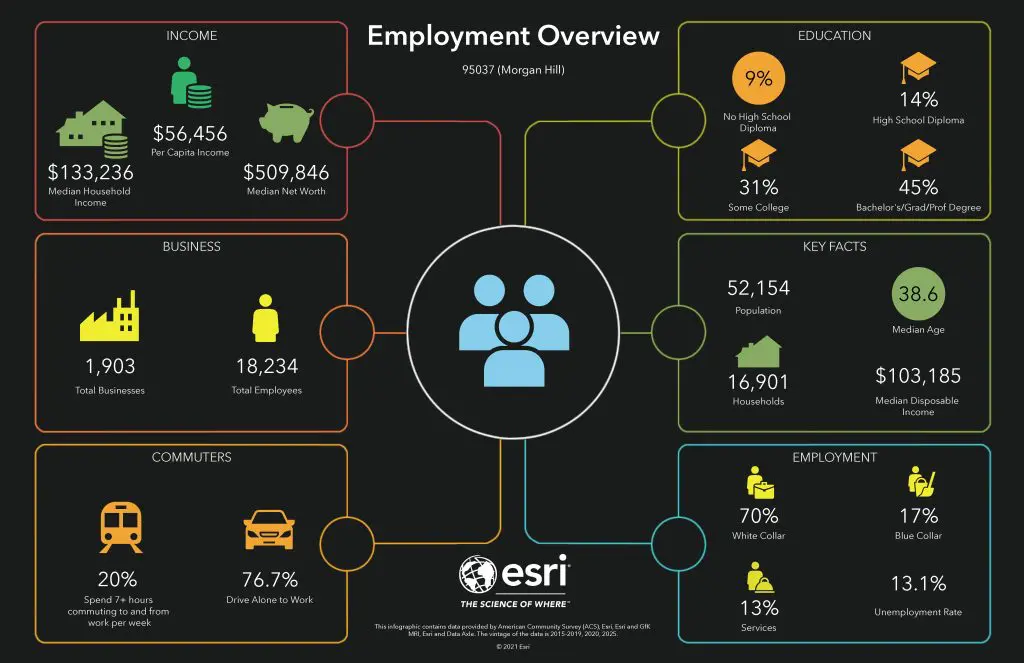
4. Review Insurance Participation Data
As most practices rely heavily on revenue from the insurance companies, it is essential to understand what payers are in your area and what market share each has. Insurance payers play a vital role in your success so please spend some time to understand the payer landscape. It’s unfortunate but true that many payers have closed panels across the country for certain specialties and this truth can make or break your practice. If your practice is going to rely heavily on medicare then it’s not enough to just participate with straight Medicare. You need to also be credentialed and contracted with the various Medicare advantage plans available in your area. In most areas, there are about 20 key insurance plans with 7-10 of those plans being critical to your success. If UHC has 20% of the commercial market and also has a closed panel, this could be a real problem for a new business. Closed panels don’t always mean that you won’t get a contract but if you’re going to make an argument for being contracted, you better have solid data to support your case.
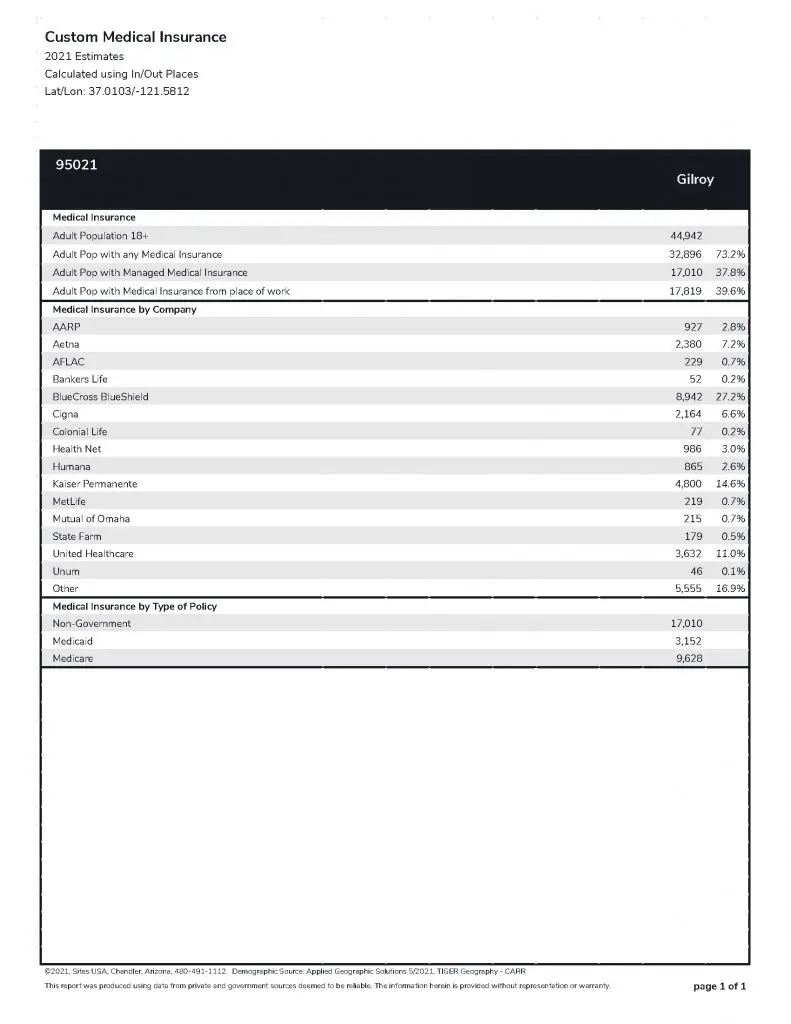
5. Cost of Living Trends
What is the cost of living in your area? Do you live in an expensive metropolitan city, or a rural town with low median incomes? What is fueling the increase or decrease in cost of living? COL increases are typically a sign of a booming economy where there is more demand than supply. It’s important to understand the cost of living dynamic and the potential impact it will have on your patient population and future employees. While a booming economy is a good thing, assuming that’s the reason behind the growth, insurance payers don’t typically keep up with COL which means you’ll be earning the same fee for an office visit while paying more for your two biggest expenses, real estate and wages.
In addition to reviewing the raw data, it would be a good idea to actually see what the labor market is like and what you should anticipate spending for the staff you’ll need. You can do this by simply posting a couple ads for the positions you intend to fill and see what kind of interest you spark. Labor demand often coincides with higher COL which means you’ll likely end up paying more for staff than anticipated. Conversely, a lower COL could point to a slowing economy which is why COL is only one piece of the location evaluation puzzle
6. Is the Community Surviving or Thriving?
Is the community you’re interested in expanding or contracting? One of the best ways to review this is to just drive around and speak to other local business owners. We love locations where new daycares, large chain restaurants and grocery/hardware stores are popping up. Stores such as Publix, Home Depot and Chick-fil-A spend millions of dollars every year trying to identify their next location. If you’re uncertain about your research, you can always fall back on large corporations who invest millions in getting it right.
Back to our prior example, if you’re opening a pediatric practice, take a look at the school systems statistics to see how enrollment is trending. You can also find out from the city if there are any new schools in development. New charter/private schools in the area are also a great indicator of growth.
If you’re the dermatologist, look for gyms geared towards seniors, golf clubs, more established neighborhoods, and potential referral partners such as primary care physicians or other specialists where the average age of their patients correlates with yours.
7. Examine City Competitiveness for Investment and Jobs
How is the economy doing in the community you’re considering? What is the outlook and current trend regarding new jobs and corporate investment? I’m reminded of conversations I had with a start-up in Detroit back in 2015. The physician was from the area and really wanted to serve the community that he grew up in. We love helping providers achieve their goals but some times the goals of an individual are not aligned with the present circumstances. Unfortunately, the economy in Detroit was on life support and this was clearly evident by every metric we reviewed. After more research and pointing out to him that even the area hospitals were going out of business(https://www.freep.com/story/money/business/2015/10/17/doctors-hospital-pontiac-open-but-life-support/73588744/), he decided to look at some other options and table the Detroit plans until a later date. Presenting this data was tough because we really didn’t want to disappoint but we have a duty to educate our customers about potential risks that their excitement may have overlooked.
One of the ways you can identify potential risks and opportunities is to take a look at the city’s budget and review how their tax revenue is trending. Covid has obviously drastically changed things for many cities which makes analyzing this data more challenging but still vital. The loss of tax revenue for some cities will inevitably lead to those cities raising their taxes on those that remain. This will exasperate the exodus from these areas and lead to even greater deficits. We are not economists here but it doesn’t take many brain cells to understand this correlation. Ultimately, tax revenue surplus equals more money that can be directed towards investing in the city vs a deficit that will eventually lead to cuts or higher taxes. Even historically stable and growing communities are facing new challenges with employers allowing work from anywhere and college students electing to do online school. There are always exceptions and it’s quite possible that the area you’re considering will rebound but gambling on a rebound shouldn’t be done without proper research.
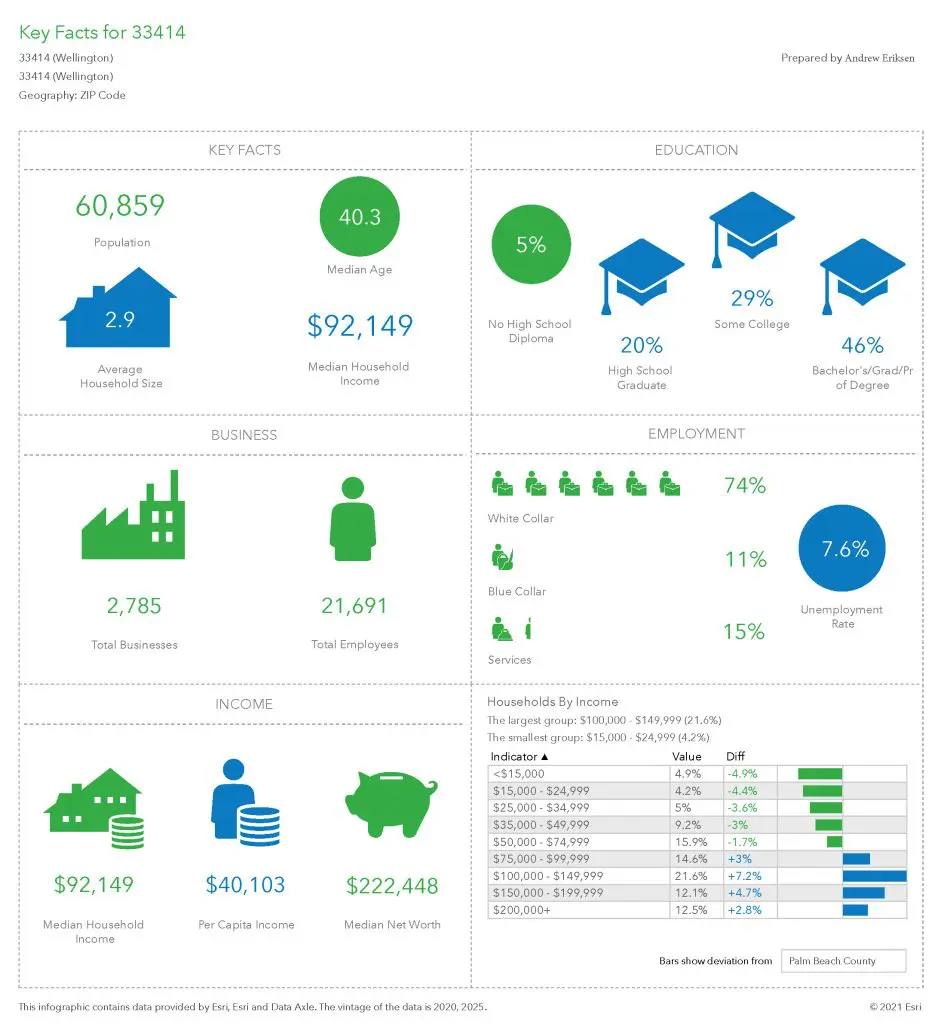
8. How Will You Attract New Patients
This question isn’t often asked by new medical practices but is incredibly important when first starting. The medical landscape is no different than any other industry when it comes to competition. Do not expect to put a sign up and have your phone ringing off the hook. There are numerous ways to attract new patients but many don’t provide a tangible way to measure their success. You should familiarize yourself with the term cost per acquisition and measure this as a business. You will see this metric in any online marketing you do but you should also utilize this for all other forms of marketing. There are primarily five ways that you will acquire new customers/patients which are: website/social media, offline advertising, insurance directories, physician referrals and patient referrals.
- Offline advertising is very expensive and even with the exposure, most of your potential customers will first verify that you are participating with their insurance and check out your website before scheduling an appointment.
- Meeting with potential referring providers is a critical part of the start-up process but most physicians/providers have established referral patterns that is difficult to break. Put in the work to build these relationships, just don’t start your practice assuming that you will be overwhelmed with referrals. I’ve had providers tell me that they will send everything to me only to later learn that we were only getting a fraction of the total referrals.
- Patient referrals will come naturally if they have a positive experience at your practice. Your focus to create more referrals is to build a relationship with each new patient and do your part to ensure their experience is positive.
- Insurance directories(which are primarily online now) provide you with an excellent source of new patients. This is why we emphasize to all of our new clients the importance of being on as many insurance plans as possible when starting out. It does require a little more administrative work but even one new patient per year is worth the cost. The value of each new patient isn’t entirely wrapped up in the one-time or annual encounter, every new patient has the potential refer countless more. The bottomline is, participate with as many payers as you can initially and don’t scoff at the small payers.
- This brings us to online marketing which is by far the most effective way to attract new patients. One of the best things about online marketing these days is that you can literally taylor a campaign to only target specific people that fit the profile of your patient. This is where traditional advertising falls on its face. A billboard on the interstate will attract a lot of eyeballs but how many of those eyeballs are in the head of your next patient. One of our favorite things about online marketing is that you can create a marketing campaign on Google or FaceBook as an example, that will tell you how your dollars will be used and what to expect in return. An example of this can be found for free by creating a FaceBook page for your new practice and playing around with their advertising tools to see what each dollar will produce. Google has a similar tool within their Adwords tool that will tell you the average cost per click. Remember, the best marketing campaign in the world will do nothing for a website that doesn’t effectively communicate your services and convert visitors to patients. Once you understand how many website visits your dollars will produce, the next phase is to review the click-to-conversion or CPA (cost per acquisition) metric. Meaning, how many visitors does it take to produce a new customer? Attracting new customers to your website is only the first step, your website must do its part to convert this traffic. Did you know that a recent statistic states that over 80% of US consumers visit your website before visiting or purchasing? Also, the average consumer will spend 2.6-5.8 seconds on a website before either clicking away to find something else or taking a deeper dive. Your website is your first impression, don’t let customers walk away because you failed to invest appropriately.
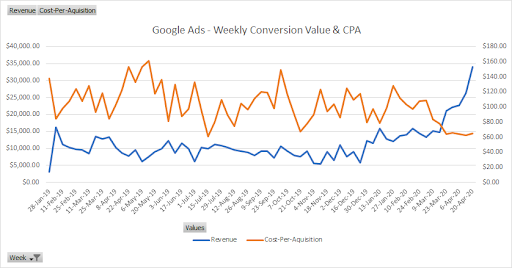
9. Determine if Location is Comfortable for You
This is pretty self explanatory but in the haste to open a new business, some of the essentials of being happy longterm are often overlooked. Take a breath and ask yourself if you can envision yourself in this location 10-20 years.
- Can you live relatively close to your practice or will you need to commute?
- If you’re going to be operating out of a hospital or taking call, can you live close enough where this won’t be too much of a burden? You can do anything for a year but I’m talking about 5-10 years down the road.
- Are there imaging and surgery centers nearby if your practice utilizes these?
- What about places to eat lunch, seems stupid but it becomes painful when you’re starving and surrounded by shit food.
- If you or plan to have children, is it close enough to their school where you can drop them off on your way to the office?
At the end of the day, you want to work where you want to live not the other way around.
10. Understand Current Competitive Landscape
What does your competition look like? How busy are they? What is the physician density in your area? Can you identify any competitive advantages that your practice would have? If these aren’t questions that you can answer then you need to spend some more time evaluating the area. One of the most important components of a solid business plan is found in outlining your competitive advantage and marketing strategy. One of the largest GI practices in the country has a very simple way of identifying new opportunities. They simply look at new patient wait times at their competitors to determine if the community can quickly support another gastroenterologist. If the wait time is under 2 weeks, they typically shy away from these areas. If it’s over 2 weeks, then it makes their short list. If over 4, you can be sure they’ll be in your area within a couple months. This is something to consider once your business is off the ground. If your new customers have to wait weeks to be seen, that certainly gives them plenty of time to find another provider that can get them in more quickly. They can simply call their insurance carrier or contact the referring provider if there is one and find an alternative. Below is an example of a competitive landscape map that we can prepare as part of a location study.
